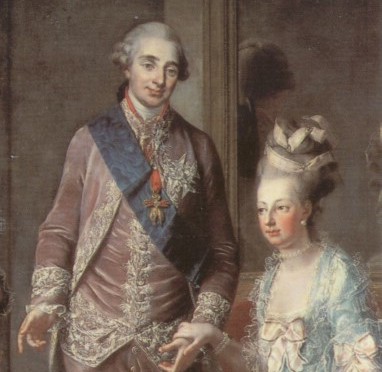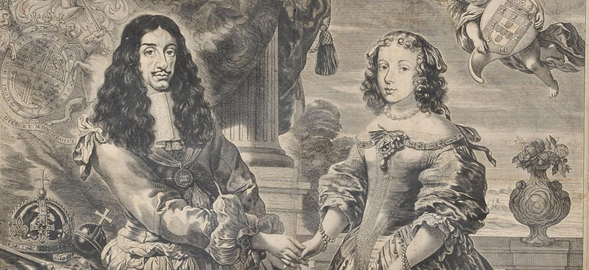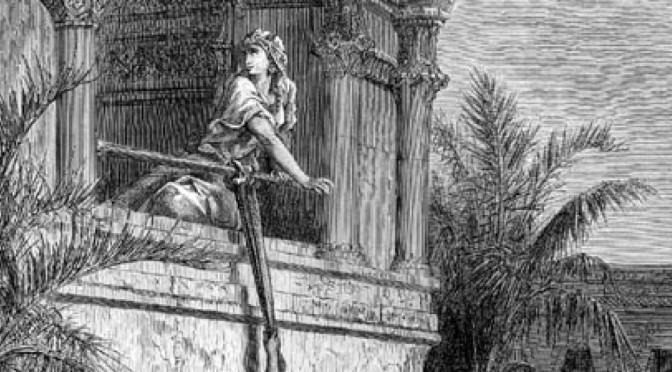Princess Alice was a unique and remarkable individual. She was born in 1885 in the presence of her grandmother, Queen Victoria, at Windsor Castle.
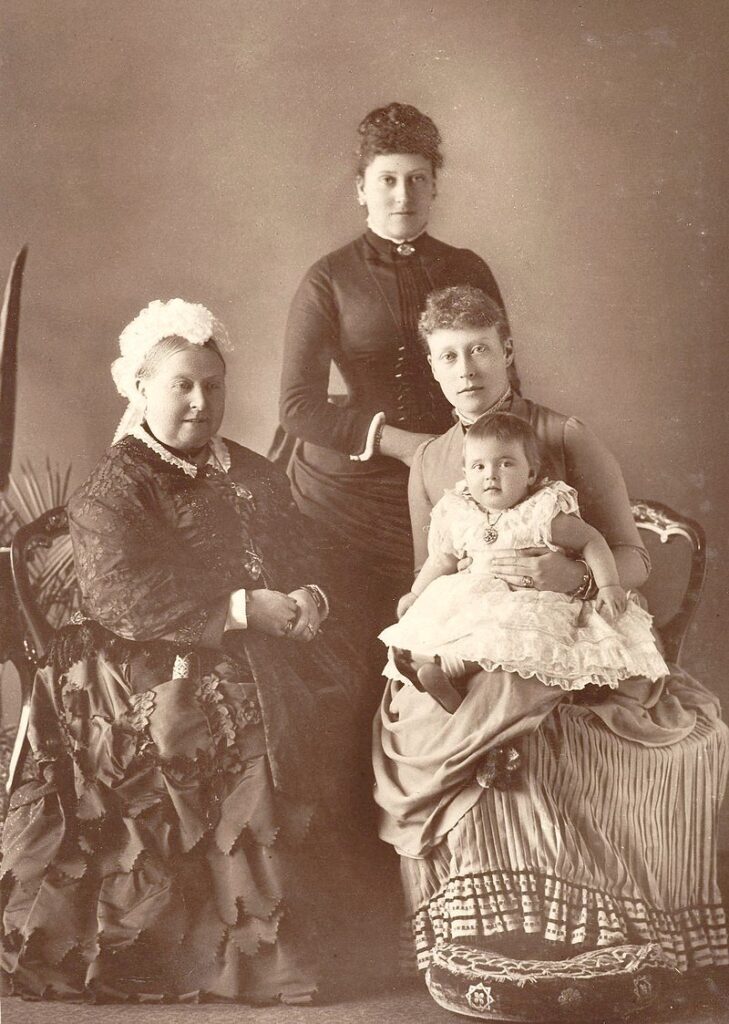
“The Four Generations” by Gustav Mullins
Baby Alice sits on her mother’s lap. Her aunt is standing, and her grandmother, Queen Victoria, is sitting.
Alice knew four languages, was deaf, and fluent at lip reading. Her marriage to Prince Andrew of Greece and Denmark in 1902 produced a family of four daughters and one son. She went through World War I bandaging up soldiers in war zones, her husband nearly being executed, and the family fleeing in exile from Greece. By 1923, the family were refugees in Paris.
Though the family didn’t have much money, her son, Philip, told biographer, Gyles Brandeth, “My recollection of the 1920s in Paris was that we were a very happy family, and it was a very good time.”
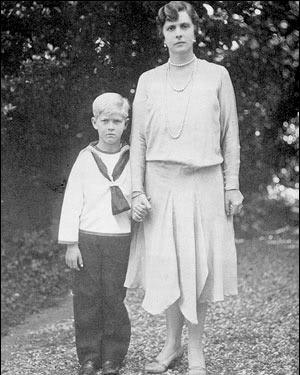
Prince Philip with his mother in 1926.
Princess Alice’s youngest child and only son didn’t know his mother was going through a breakdown. She told people of erratic religious visions. Other family would send her to a clinic where she was forced to have very inappropriate physical treatments. Alice discharged herself from there after a few months. Her mother wasn’t convinced, and arranged Alice to be taken away to a sanatorium in Switzerland. In 1930, Alice was taken away while her mother took Philip on a picnic. Alice felt like a prisoner and even made an escape attempt. She missed all four of her daughters’ weddings. Her son was sent to British relatives and boarding schools. Her husband lived in France with his mistress.
In 1932, Alice was discharged from the sanatorium. She distanced herself from her family and traveled throughout Europe. But she really missed her son though. Alice began exchanging letters with her son and other family members. In 1937, she briefly reunited with her family (including Philip and her estranged husband) for the funeral of a pregnant daughter who–with her husband and other children–died in a plane crash. The family noticed that Alice was back to being mentally stable. She felt needed again.
In 1938, Alice returned to Greece–which now was more friendly to royals. Upon her return to Greece, Alice went to helping the poor and needy. Food soon ran out in Athens. Her brother would send food or money to her but was frustrated that she would give it away.
The Cohens
The Cohens were a prominent Jewish family in Greece with ties to the royal family. As Greek Jews were being rounded up and sent to death camps in 1943, Rachel Cohen and her daughter, Tilde, were hiding in the outskirts of Athens but needed a safer hiding place.
When the Cohens walked passed the royal residence, Alice’s lady-in-waiting came out and greeted them. Alice and the lady-in-waiting had been on the lookout for the family since the day before. Alice was more than happy to taken Rachel and Tilde in. Later, Rachel’s youngest son, Michel, joined his sister and mother in hiding.
The Gestapo had suspicions that Alice was hiding Jews. They heard conversations (Alice and the Cohens) coming from upstairs. When they questioned Alice, she said it was just the nanny and was able to dodge other questions using her deafness as an excuse.
Evy Cohen, a descendant of the Cohens, credits her existence to Alice. She insists Alice’s story must be told. The Cohens applied for Alice to be recognized as one of The Righteous Among the Nations. In 1994, Philip visited his mother’s grave in Israel (yes, I’m jumping ahead a little bit), and at the ceremony honoring her, he commented how Alice didn’t tell her family the story immediately. He said:
“For years, we did not know, and, as far as we know, she also never mentioned to anyone, that she had given refuge to the Cohen family.”
She gave refuge to the Cohen family for thirteen months. By that time, Athens was liberated. Alice continued to stay in Greece, helping out, but made some important visits to Britain.
Going to Britain
One visit occurred in April 1947 when her son got married to Princess Elizabeth. Alice had arranged for some of her few remaining jewels be incorporated in the engagement ring.
When Alice went back to Greece, she decided to become a nun and start an order. Another important visit to Britain was her daughter-in-law’s coronation. Alice showed up in a designer nun’s habit.
When she was back in Greece, she continued to volunteer but found it hard to find women proper enough to become nuns. With her failing health and a royal coup in Greece, Alice was persuaded by Philip and Elizabeth to return and live in England in 1967. She resided in Buckingham Palace and died in 1969.
Shortly before her death, she wrote her son,
“Dearest Philip, Be brave, and remember I will never leave you, and you will always find me when you need me most. All my devoted love, your old Mama.”
Legacy
Before her death, she wished to be buried in Jerusalem. In 1988, her remains that were buried in England were moved to Jerusalem. Since then, her son, grandson, and great-grandson, have visited her grave.
She was recognized as Righteous Among the Nations. In the 1994 ceremony, Prince Philip also said,
“I suspect that it never occurred to her that her action was in any way special. She would have considered it to be perfectly natural human reaction to fellow beings in distress.”
On Holocaust Memorial Day 2025, Prince William gave a touching tribute to Alice:
Princess Alice was one eccentric, brave princess. Her life could have been a tragedy with all it setbacks, but she did overcome them. Her example of service and not giving into peer pressure is a story that really does need to be told.
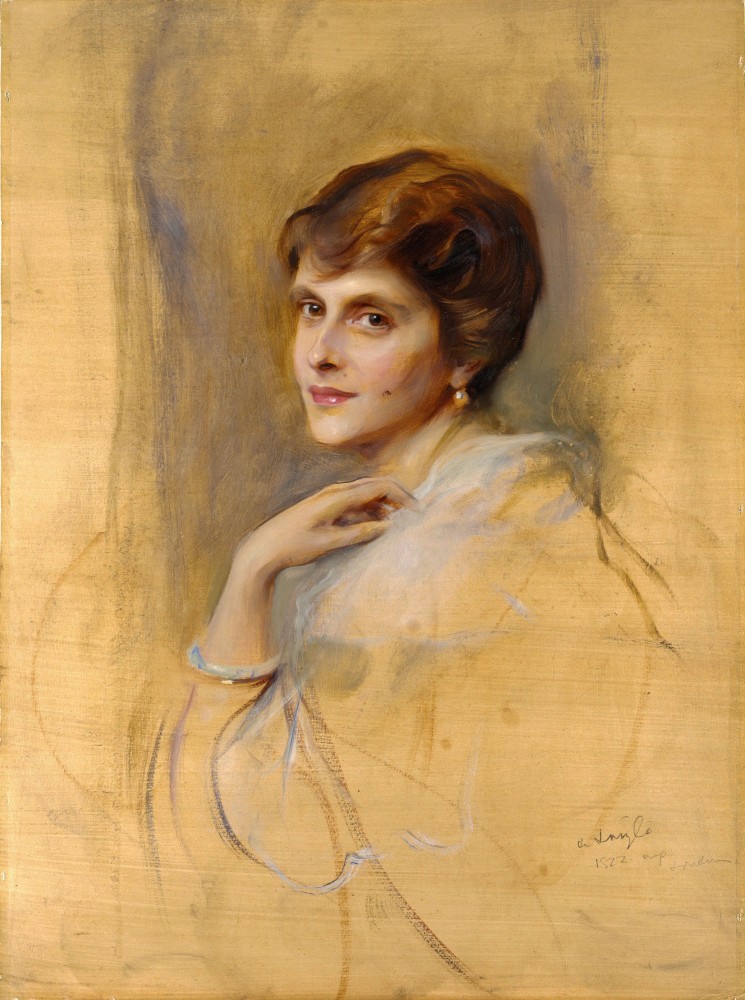
Princess Andrew of Greece and Denmark by Philip de László, 1922.
From Private collection of Prince Philip, Duke of Edinburgh.
Sources
Videos:
In addition to Prince William’s tribute, check these enlightening videos out:
The Extraordinary Life Of Princess Alice | Queen’s Mother-in-Law | Real Royalty Accessed Mar 3, 2025.
Princess Alice: The Royal’s Greatest Secret | Royal Family Secrets. Accessed Mar 3, 2025.
Articles:
The extraordinary life of Prince Philip’s mother, Princess Alice of Battenberg, on the anniversary of her birth by Rebecca Cope. The Tatler. Accessed Mar 3, 2025.
How Princess Alice saved an entire family from the Nazis. The Guardian. Accessed Mar 3, 2025.
Prince Philip’s Mother Saved Jews during the Holocaust by Adam Ross. aish.com. Accessed Mar 3, 2025.
Prince Philip Received a Heartbreaking Letter From His Mother Just Before She Died by Amy Mackeldon. Marie Claire. Accessed Mar 3, 2025
Prince William pays tribute to deaf great grandmother Princess Alice by Heather Lomax. British Deaf News. Accessed Mar 3, 2025.
Princess Alice. Yad Vashem: The World Holocaust Remembrance Center. Accessed Mar 3, 2025
Princess Alice of Battenberg: The Other ‘People’s Princess’ by Hannah McCann. New Histories. Accessed Mar 3, 2025.
Princess Alice of Battenberg wikipedia article. Accessed Mar 3, 2025.
A Righteous Princess. by Daniel Adamson. Holocaust Centre North. Accessed Mar 3, 2025.
ROYAL HERO How Prince Philip’s mum risked her life to hide three members of a Jewish family and save them from Nazi death camps by Alison Maloney. Accessed Mar 3, 2025



